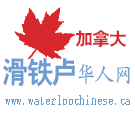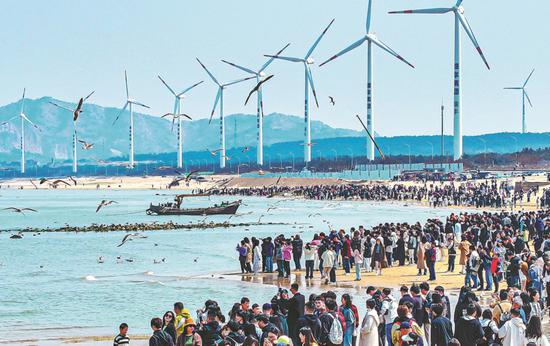 |
 A wind farm offers a picturesque backdrop to a tourist site in Penglai, Shandong province. (LI XINJUN/FOR CHINA DAILY) China's economy is poised for a steady rebound throughout this year, underpinned by consumption-led recovery, a robust foundation laid in the first quarter and the gradual stabilization of the property sector, experts said. While the broader economy is still facing pressures from still-weak domestic demand and mounting uncertainties both at home and abroad, the country still enjoys favorable conditions and positive factors that will further consolidate the recovery trend, they said. Gu Yan, director of Research Department I at the Xi Jinping Thought on Economy Study Center, said the "scarring effect" caused by the COVID-19 pandemic is gradually fading, as more Chinese are now willing, and have the potential, to spend more. Gu made the remark at a meeting on China's economic situation held in Beijing on Monday. He said that consumption will continue to recover this year, given the implementation of the country's policies to encourage consumption and the strong resilience of the Chinese economy. Data from media group Caixin showed that the Caixin China General Services Purchasing Managers' Index came in at 52.5 in April versus 52.7 in March, above the 50-point mark that separates growth from contraction. Caixin's composite PMI, which includes both manufacturing and services activities, rose to 52.8 in April from 52.7 the previous month. Wang Zhe, senior economist at Caixin Insight Group, said the Caixin PMI readings are consistent with the year's strong start, as China's economic performance in the first quarter surpassed market expectations, with steady growth in manufacturing and a gradual recovery in consumption. Mao Kejun, director of Research Department III at the Xi Jinping Thought on Economy Study Center, highlighted the robust industrial production in the first quarter, expressing strong confidence about China's long-term development. "China's economy still enjoys favorable conditions and positive factors, including its powerful industrial production capacity and a complete industrial system," Mao said. So far, 31 provincial-level regions have released their local GDP numbers for the first quarter. Sixteen areas outperformed the national growth rate of 5.3 percent year-on-year in the first quarter, with Jilin, Jiangsu and Hubei provinces expanding by 6.5 percent, 6.2 percent and 6.1 percent, respectively. Hubei Governor Wang Zhonglin said at a news conference in Beijing on Tuesday that the province will make more efforts to consolidate its recovery trend, with focus on promoting the deep integration of technological and industrial innovation, further expanding opening-up and driving green transition. He said efforts to build Hubei capital Wuhan into a nationally influential science and technology innovation center will be accelerated, and more efforts are needed to achieve breakthroughs in major advantageous industries such as optoelectronic information, strengthen and optimize the construction of modern industrial clusters in the province and foster new quality productive forces. A recent meeting of the Political Bureau of the Communist Party of China Central Committee called for efforts to develop new quality productive forces according to local conditions, cultivate and strengthen emerging industries, proactively plan and build future industries, and make use of advanced technologies to empower the transformation and upgrade of traditional industries. Xiong Yuan, chief economist at Guosheng Securities, said China's second-quarter GDP growth rate is likely to be around 6 percent, and the country needs to take more steps to better implement existing supportive policies and keep stimulus efforts persistent. |
Powered by Discuz! X3.4 Licensed
© 2001-2023 Discuz! Team.